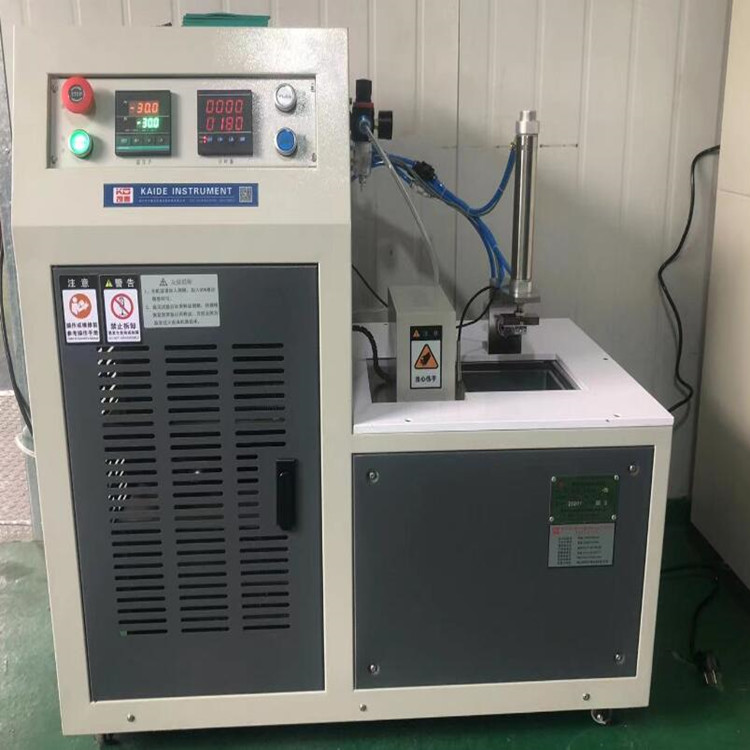
Rubber low-temperature brittleness testing machine
2024/04/17

Structural principle:
1. The equipment consists of a refrigeration compressor main body, a heating device, an electronic control box, a cooling tank, a cooling medium circulation system, an automatic alarm device, and other parts. After starting the refrigeration switch, the compressor starts working and the refrigeration system enters the official working state. The refrigeration compressor operates continuously, and as it approaches the set temperature, the heating device in the cooling tank begins to provide heat proportionally to balance the excess cooling generated by the refrigeration system and achieve constant temperature. Stirring can continuously circulate the cooling medium in the cooling tank, ensuring a uniform and consistent temperature.
2. Sample holder
Rubber type: Sample A can hold an additional 5 at a time, generally not exceeding 4;
Plastic: Sample A can hold 15 pieces at a time, while Sample B can hold 5 pieces at a time.
3. Impact device
The impact device consists of an impact hammer and a self-locking mechanism.
4. Impactor
4.1 Rubber
a) The radius of the impact head is 1.6 ± 0.1mm;
b) During impact, the gap between the impact head and the sample holder is 6.4 ± 0.3mm;
c) The distance between the centerline of the impact head and the specimen holder is 8 ± 0.3mm.
4.2 Plastics
4.2.1 Sample A:
a) The punch radius is 1.6 ± 0.1mm;
b) The radius of the jaws is 4.0 ± 0.1mm;
c) The clearance between the centerline of the punch and the fixture is 3.6 ± 0.1mm;
d) The gap between the outer side of the punch and the fixture is 2.0 ± 0.1mm.
4.2.2 Sample B:
a) The punch radius is 1.6 ± 0.1mm;
b) The clearance between the centerline of the punch and the fixture is 7.87 ± 0.25mm;
c) The gap between the outer side of the punch and the fixture is 6.35 ± 0.25mm.
Previous: Paint film impact resistance tester parameters
N e x t : Lithium battery separator permeability tester standards



